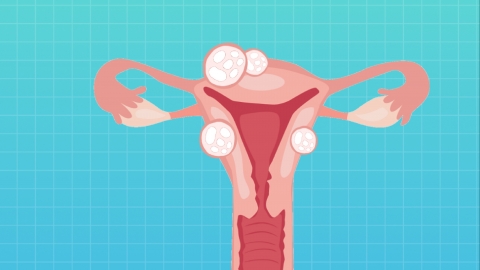How to treat uterine fibroids to eliminate them
Generally, the occurrence of uterine fibroids may be related to factors such as hormonal fluctuations, unhealthy lifestyle habits, endocrine disorders, endometritis, and adenomyosis. It is recommended to seek timely medical consultation, identify the underlying cause, and then improve the condition under a doctor's guidance through general treatment, medication, surgical treatment, and other approaches. A detailed analysis is as follows:

1. Hormonal fluctuations: Abnormally elevated levels of estrogen and progesterone can stimulate excessive growth of uterine smooth muscle, leading to fibroid formation, commonly seen in women of childbearing age. Maintain a regular sleep schedule, avoid staying up late, reduce intake of hormone-containing supplements, eat a light diet, and consume more legumes, vegetables, and other foods rich in dietary fiber to help regulate hormonal balance.
2. Unhealthy lifestyle habits: Long-term smoking, excessive alcohol consumption, or obesity can affect bodily metabolism and hormone regulation, increasing the risk of fibroids. Quit smoking and drinking, engage in aerobic exercise such as jogging or swimming 3-4 times per week for 30 minutes each session, maintain a healthy weight, and reduce the likelihood of fibroid growth.
3. Endocrine disorders: Conditions such as thyroid dysfunction and polycystic ovary syndrome can cause hormonal imbalances that stimulate fibroid growth, often accompanied by irregular menstruation and hirsutism. Patients should follow medical advice to use medications such as drospirenone and ethinyl estradiol tablets, desogestrel and ethinyl estradiol tablets, or sodium levothyroxine tablets to regulate the endocrine system. If the fibroid diameter exceeds 5 centimeters, abdominal myomectomy may be performed to completely remove the fibroid.
4. Endometritis: Long-term inflammatory stimulation of the endometrium may induce abnormal proliferation of uterine smooth muscle, forming fibroids, often accompanied by menstrual irregularities and lower abdominal pain. Patients should follow medical advice to use medications such as cefuroxime axetil tablets, metronidazole tablets, or levofloxacin hydrochloride capsules to control inflammation. Reducing inflammation can help eliminate triggers for fibroid development.
5. Uterine adenomyosis: Endometrial invasion into the uterine muscle layer can stimulate tissue proliferation in the muscle layer, potentially accompanied by fibroid formation, manifesting as worsening dysmenorrhea and increased menstrual flow. For mild symptoms, patients may follow medical advice to use medications such as gestrinone capsules, danazol capsules, or ibuprofen sustained-release capsules to relieve symptoms. If the fibroid is large, laparoscopic myomectomy may be performed to remove the fibroid while preserving uterine function.
In daily life, maintain emotional stability and avoid long-term anxiety or depression. Regular gynecological checkups are important to monitor changes in fibroids. Pay attention to menstrual hygiene and avoid strenuous exercise during menstruation. Comprehensive management can reduce the impact of fibroids on the body and promote uterine health.




